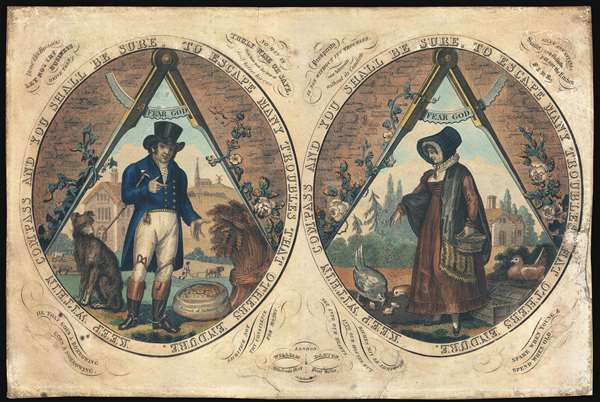1820 William Darton Masonic Broadside 'Keep Within Compass'
MasonicAllegory-darton-1820
Title
1820 (undated) 11.25 x 17 in (28.575 x 43.18 cm)
Description
The figures are surrounded by tidbits of wisdom, some drawn from Biblical sources:
Sacrifice not thy Conscience for Money.Variant forms of these images appear in England and North America from roughly the mid-18th century. This example, from the 19th century is late, but distinctive as coming from the workshop of Print and Map Seller, and Freemason, William Darton. Examples of this broadside are today quite rare.
Spare when Young, and Spend when old.
He that Goes a Borrowing Goes a Sorrowing.
etc…
Cartographer
William Darton (February 2, 1781 - July 28, 1854) was an English publisher and engraver active in Tottenham London during the early part of the 19th century. Darton was the eldest son of William Darton Sr., himself a printer and publisher who co-owned the firm of Harvey and Darton. Darton, a Quaker, was educated at the Friends School in Clerkenwell, London and the Ackworth School in Yorkshire. Afterwards Darton apprenticed to his father where he mastered the part of printing and engraving. Around 1804 Darton opened his own shop, the "Repertory of Genius", specializing in maps, prints, children's books, educational publications, and other "works of merit" at 50 Holborn Hill, London. Cartographically Darton's most significant contribution is his 1823 publication, along with engraver W. R Gardner, of the first composite comparative mountains and rivers chart. Darton also published various maps for the 1802 Atlas to Walker's Geography and his own 1813 Union Atlas. Darton retired in 1851 leaving his business to his son, John Maw Darton, who partnered with Samuel Clark and published as "Darton and Clark". More by this mapmaker...

